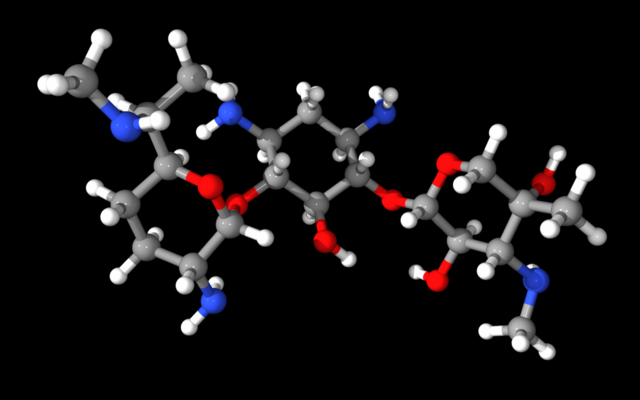


Although gentamicin is very effective as an ointment for skin infections, its use in other treatments is still limited due to potential toxicity (image: Wikimedia Commons)
Published on 02/05/2025
Agência FAPESP* – Researchers from the Laboratory of Applied Structural Biology at the University of São Paulo’s Biomedical Sciences Institute (ICB-USP) in Brazil have taken a decisive step towards the production of safer forms of the antibiotic gentamicin, which is widely used to treat bacterial infections. The team, which is part of the Biology of Bacteria and Bacteriophages Research Center (CEPID B3), studied the formation of the components that make up the drug and discovered new patterns that can be used to create less toxic versions of gentamicin.
The results of the research were published in the journal ACS Chemical Biology.
Although gentamicin is very effective as an ointment for skin infections, its use in other treatments is still limited because of its potential toxicity, especially to the kidneys and ears. Produced by the bacterium Micromonospora purpurea, gentamicin is made up of five molecules, each with different levels of antibiotic activity and toxicity. Professor Márcio Dias, head of the study and of the Laboratory of Applied Structural Biology, explains that separating and understanding these molecules is fundamental to improving the drug.
The research focused on a key step in the production of two of these five components, which have very similar structures but differ only by an atomic rearrangement. “This process is catalyzed by the GenB2 enzyme, which converts gentamicin C2 into C2a,” explains Dias. “Without this enzyme, gentamicin C2a wouldn’t be formed and the drug would have only four components.” He adds that even small variations in this process can affect both the efficacy and toxicity of the antibiotic.
While studying the structure and function of GenB2, the researchers discovered that the enzyme works in a unique way. “It uses vitamin B6 to catalyze its reactions,” explains Dias. “Although other epimerases also use this vitamin, GenB2 has a distinct three-dimensional structure and unique behavior, using a rare amino acid, cysteine, which is not conserved in other enzymes of this class.”
According to the authors, the findings open up new avenues for the development of safer and more selective versions of gentamicin.
“We can manipulate the production process to obtain extremely pure forms of these molecules, potentially reducing their toxicity,” says Dias.
In the future, he foresees the possibility of tailoring the action of GenB2 to produce only gentamicin C2 or C2a, which would be a significant advance in the treatment of bacterial infections with fewer side effects.
In addition to funding from the Research, Innovation and Dissemination Centers program (RIDCs, or CEPID in the Portuguese acronym), the research was also supported by the Direct Doctorate Scholarship awarded to Priscila dos Santos Bury, Dias’ PhD student.
The article “Structural and Functional Basis of GenB2 Isomerase Activity from Gentamicin Biosynthesis” can be read at: pubs.acs.org/doi/full/10.1021/acschembio.4c00334.
* With information from the CEPID B3.
Source: https://agencia.fapesp.br/53877